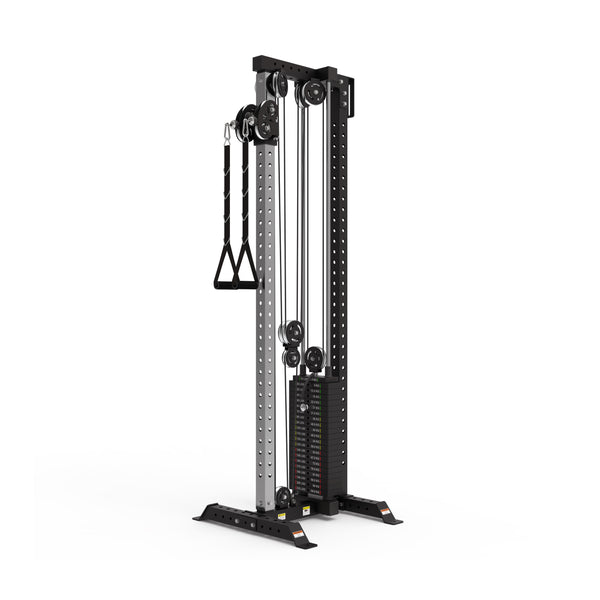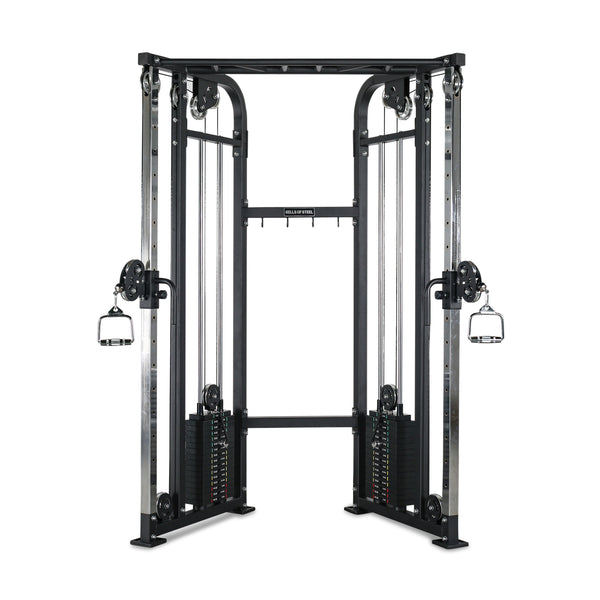Cable machines: those sleek, versatile contraptions that make you feel like a superhero in training. Whether you're at the gym or lucky enough to have one in your home setup, cable machines offer a wide array of exercises to target every muscle group.
But if you’ve ever wondered whether cable machines are more for pushing or pulling, the answer is... both!
Let’s break down what push and pull exercises are, why both are crucial to your strength training routine, and how cable machines fit perfectly into the mix.
Push vs. Pull Exercises: What's the Difference?
In the world of strength training, exercises can be broadly categorized into two types: push and pull. It’s like the yin and yang of working out—both are equally important and complement each other beautifully.
Push Exercises
These are movements where you’re essentially pushing weight away from your body. Think of a bench press or a shoulder press—your muscles are working to push a weight outwards. Push exercises primarily target the muscles on the front of your body, such as the chest, shoulders, and triceps.
Pull Exercises
On the flip side, pull exercises involve pulling weight towards your body. When you’re doing a lat pulldown or a row, you’re engaging the muscles on your backside, like the back, biceps, and forearms.
Both push and pull exercises are vital for building a balanced physique and avoiding muscular imbalances. You don’t want to be that person who’s all chest and no back, or all biceps with no triceps to match.
Cable Machines: The Best of Both Worlds
Here’s the beauty of cable machines—they’re like the Swiss Army knife of the gym. Yeah, we use that analogy a lot, but we’re big on multipurpose home gym gear. You can seamlessly transition from push to pull exercises without ever leaving the machine. This makes cable machines a go-to for anyone looking to maximize their workout efficiency.
While cable machines are often associated with pull exercises, they offer a plethora of push movements as well. Let’s dive into some examples to show just how versatile these machines are.
Push Cable Exercises
- Cable Chest Press: Get ready to work those pecs. The cable chest press mimics the motion of a bench press, but with cables, you get constant tension throughout the entire range of motion. That’s right—no slacking off here!
- Cable Shoulder Press: Time to bring the guns out! The cable shoulder press targets your delts and triceps, giving you that well-rounded shoulder development. Plus, using cables adds a stability challenge, which is great for overall muscle engagement.
- Cable Triceps Pushdown: Say goodbye to wimpy triceps. The cable triceps pushdown isolates the triceps, ensuring you get a serious burn. Just be prepared for that satisfying soreness the next day.
Pull Cable Exercises
- Cable Lat Pulldown: One of the classic pull exercises, the cable lat pulldown is all about building that V-taper. It targets the lats and upper back, giving you that wide, strong look from behind.
- Cable Seated Row: The cable seated row is your ticket to a thicker back. This exercise zeroes in on your middle back, traps, and rhomboids, helping to create that solid, muscular foundation.
- Cable Face Pull: Not just a back exercise, the face pull is fantastic for improving shoulder health and posture. It targets the rear delts and upper traps, making it a great finisher for your pull day.
Why Are Push and Pull Exercises Important?
Balancing push and pull exercises is crucial for preventing injuries and creating a balanced physique. Overemphasizing one type of movement can lead to muscle imbalances, which might cause joint pain or poor posture down the line.
Plus, a balanced routine ensures that you’re building strength evenly across all your muscle groups, so you look as good as you feel.
Frequently Asked Questions
Q: Can I do a full-body workout with just a cable machine?
A: Absolutely! With the variety of push and pull exercises available, you can easily create a full-body workout that hits every muscle group. Just remember to mix up your exercises and don’t skip leg day!
Q: Is there an advantage to using a cable machine over free weights?
A: Cable machines offer constant tension throughout the movement, which can lead to better muscle activation. They’re also safer for beginners since they guide your range of motion, reducing the risk of injury.
Q: Do I need to separate push and pull exercises on different days?
A: Not necessarily. You can do push-pull splits where you focus on push exercises one day and pull exercises the next, or you can combine them into a full-body routine. It all depends on your goals and schedule.
Conclusion
Cable machines are the ultimate multitaskers in the gym. Whether you’re pushing or pulling, these machines offer a variety of exercises that can help you build a strong, balanced physique. So next time you’re at the gym, don’t limit yourself—explore all the push and pull movements you can do with a cable machine, and watch your gains soar.
Summary of Key Points
- Push exercises involve pushing weight away from your body, targeting muscles like the chest, shoulders, and triceps.
- Pull exercises involve pulling weight towards your body, targeting muscles like the back and biceps.
- Cable machines offer both push and pull exercises, making them versatile and efficient.
- Mixing push and pull exercises is essential for a balanced strength training routine.



